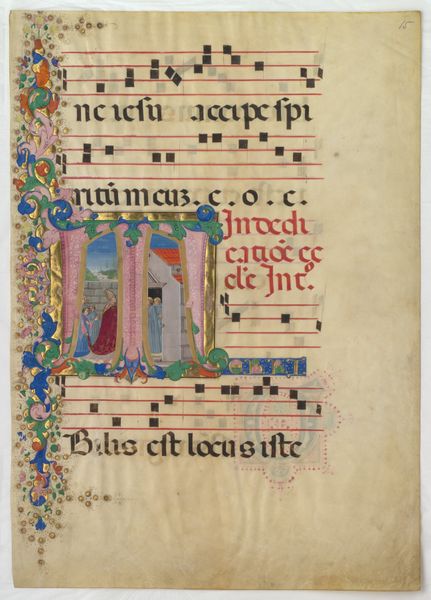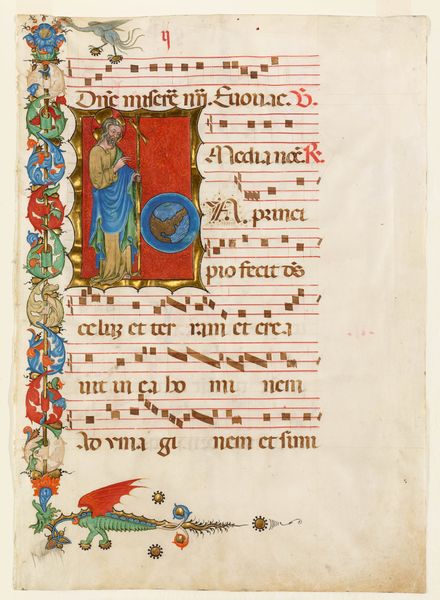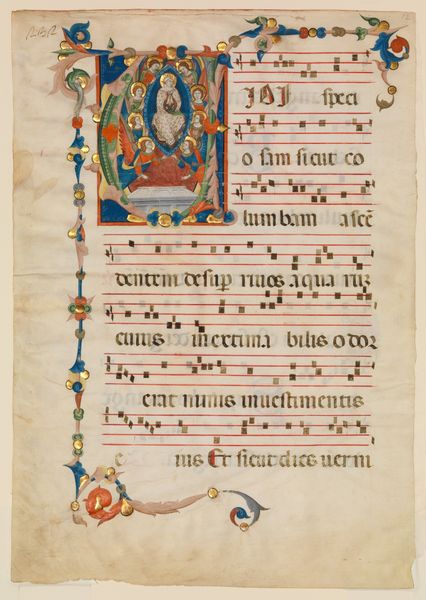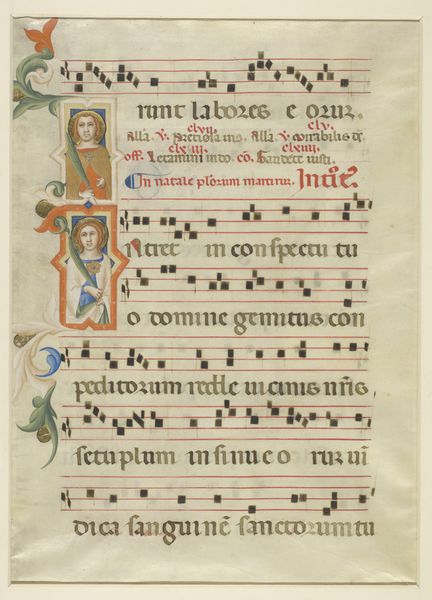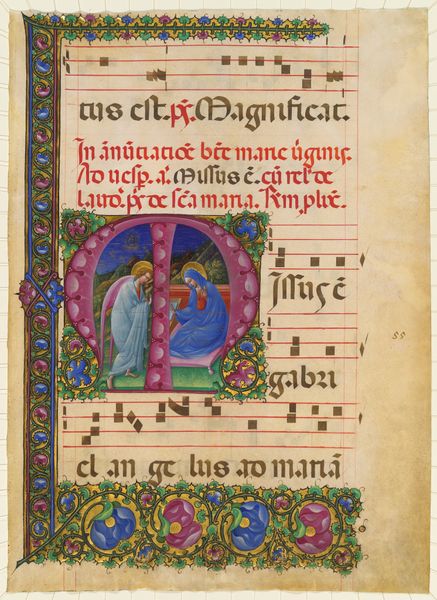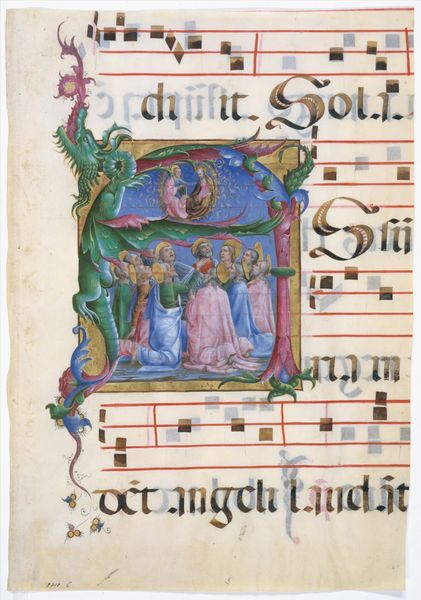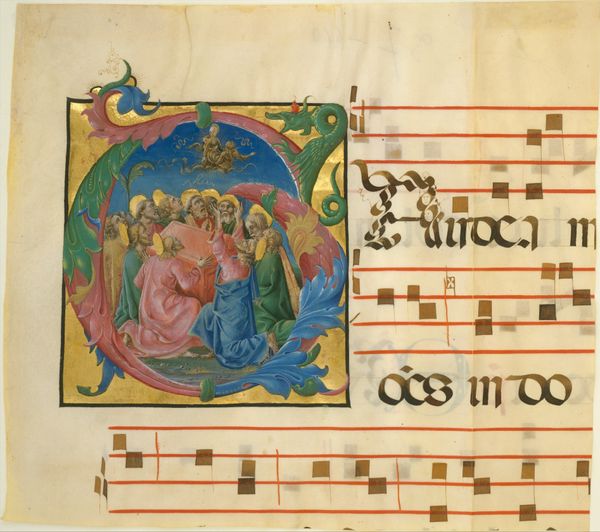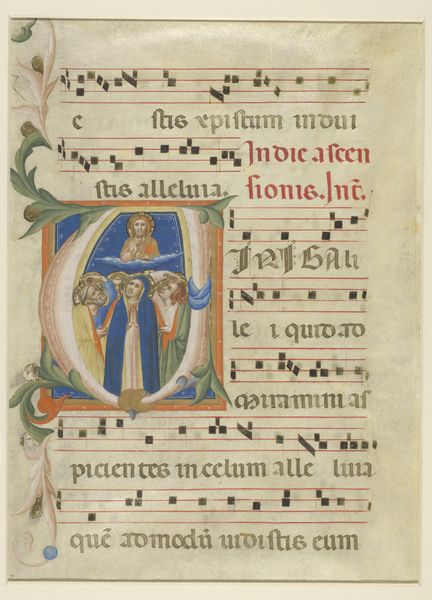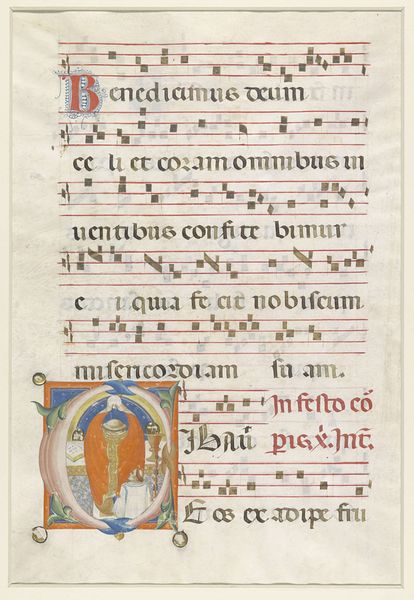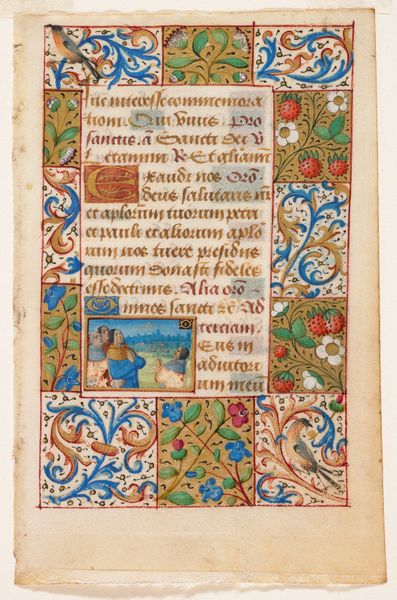
Manuscript Leaf with the Martyrdom of Saint Bartholomew, from a Laudario 1340
0:00
0:00
tempera, painting, paper
#
portrait
#
medieval
#
narrative-art
#
tempera
#
painting
#
figuration
#
paper
#
group-portraits
#
men
#
history-painting
#
italian-renaissance
#
miniature
Dimensions: Overall: 18 1/2 x 13 3/4 in. (47 x 35 cm) Mat size: 27 7/8 x 22 in. (70.8 x 55.9 cm) Illumination: 6 15/16 x 8 1/16 in. (17.7 x 20.5 cm)
Copyright: Public Domain
Editor: Here we have a leaf from a Laudario, a manuscript from 1340 by Pacino di Bonaguida, currently held at the Metropolitan Museum. It depicts "The Martyrdom of Saint Bartholomew." The scene is, shall we say, quite intense! All that emotion packed into a tiny painting. What do you see in it? Curator: It’s interesting how Pacino, in this small format, manages to blend the gruesome reality of Bartholomew’s martyrdom with a serene, almost decorative, aesthetic. The delicate colours, the ornamental border – they create a visual tension, don't they? Almost like offering a spoonful of sugar with a very bitter pill. Notice the gold leaf; how does that strike you given the painful subject? Editor: The gold feels almost celebratory, or perhaps symbolic of Bartholomew's saintly status, rather than of his suffering? It does contrast oddly with the… unflaying. Curator: Precisely! And consider the compartmentalized scenes. There's the actual flaying, depicted with a disturbing, yet distanced, clarity. Then you've got a scene of devotion and angelic intervention, neatly separated, yet part of the same narrative. Pacino isn’t just showing us horror; he's presenting a theological argument in miniature. The musical notation too -- do you see how it binds the image to devotional practice, turning suffering into song? Editor: That's a fascinating point! It’s easy to focus on the… illustration. But you’re right, it's integrated with the music and text as part of a larger devotional whole. I hadn't really considered that. Curator: Think of it as early multimedia! It’s meant to be experienced, chanted, contemplated. It forces you to reconcile the visual horror with the beauty of faith. So, ultimately, is it reverent? Or a touch macabre? Perhaps, like a good poem, it manages to be both. Editor: Well, I definitely won’t look at medieval manuscripts the same way again! Thanks for showing me so much more than just a gruesome image.
Comments
No comments
Be the first to comment and join the conversation on the ultimate creative platform.
